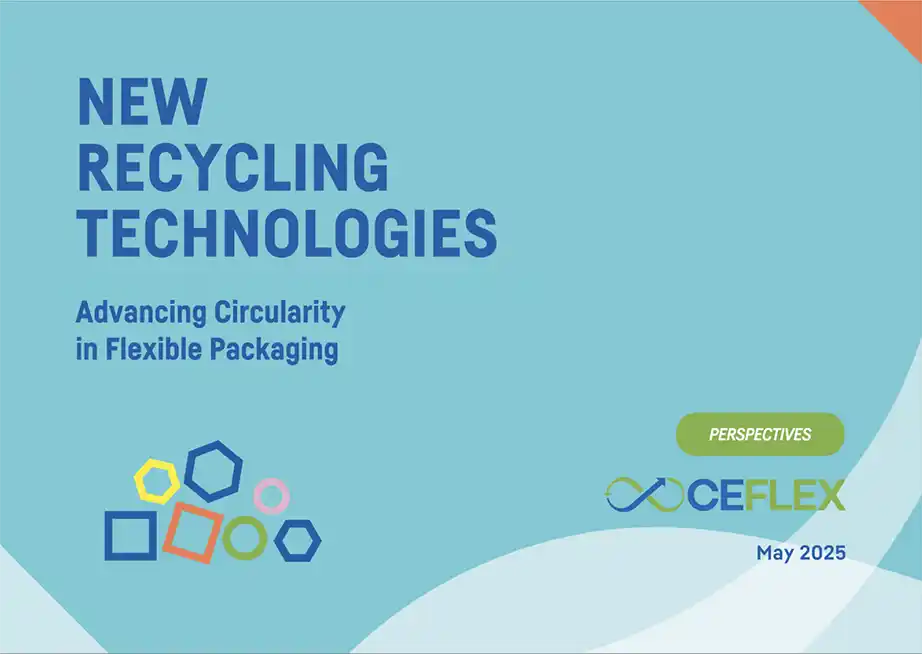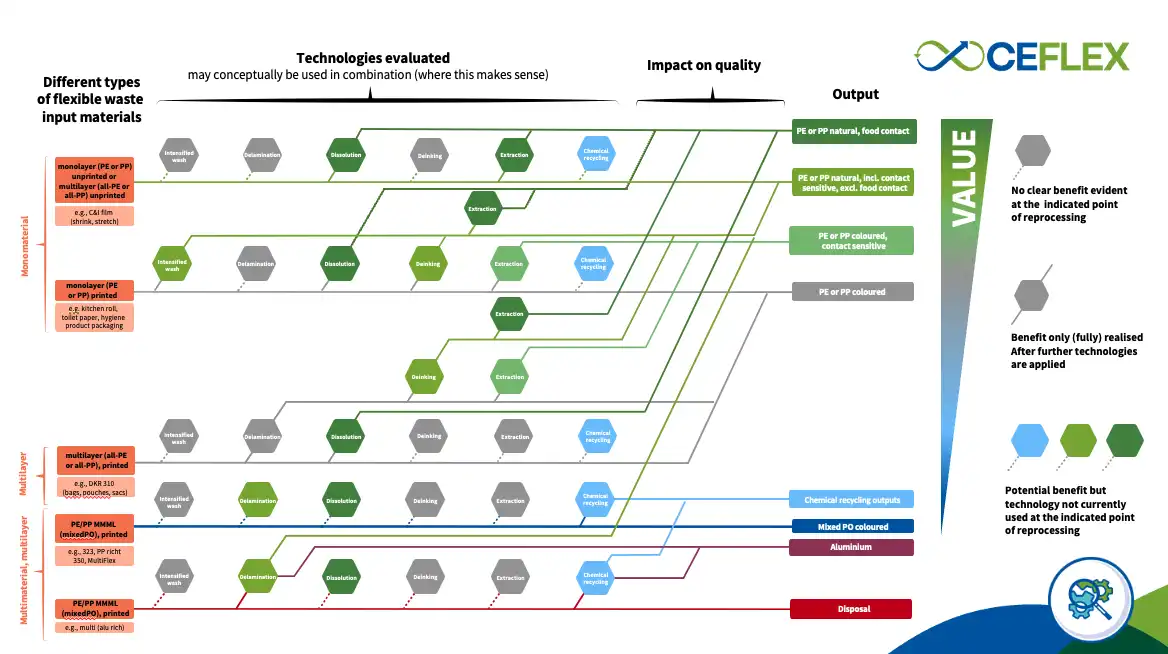The Circular Economy for Flexible Packaging (CEFLEX) initiative has conducted an assessment of five promising recycling technology classses – and how they can work in combination to add value to different feedstocks. The insights are intended to help meet the need for higher-quality recyclates, expand end-market applications, and even improve recycling rates.
“To deliver our ‘Mission Circular’ vision and ambitious targets of the PPWR – including a 55% recycling rate for flexible packaging by 2035 – we must continue to innovate, supporting technologies that can significantly upgrade material quality. This enables more demanding end-market applications for recycled content, and increases recycling rates by addressing complex waste streams that conventional approaches cannot yet process effectively.” Dana Mosora, Senior Consultant at CEFLEX.
Project Coordinator Graham Houlder observed, “Evolving and new technologies are not replacements for improving packaging design, mechanical or chemical recycling, but nevertheless essential additions to the existing recycling toolbox. The recycling technologies – and how they can work together – identified in our latest report highlights some of the key benefits and steps needed to develop and deploy them at commercial scale in the next five years.”
New Technologies to Transform Recycling Quality and Rates
After initial scouting and desk research by technology class, over 20 projects or technology developments were identified, with 12 technology providers selected for in-depth research and interview.
Given the need for action and adoption of new technologies to enable reaching both recycling rate and recycled content targets, identifying technology providers relied on examining their potential for reaching relevant thresholds: operationally effective systems ready for full commercial deployment within five years, a value creation assessment and potential to achieve processing a minimum of 10-15 thousand tonnes (KTPA) of material a year at commercial launch.
- Advanced Wet Friction Washing – Removes contaminants before extrusion, enabling higher-quality outputs with relatively low capital investment. For example, HydroDyn has developed a patented single-stage mechanical cleaning system that achieves over 70% yield, making it highly effective for surface-printed flexible plastic packaging. Their systems have already surpassed 100,000 tonnes of installed capacity across Europe.
- Delamination – Proven to improve recyclate quality by separating multi-material and multi-layer packaging, which is otherwise challenging to process. Saperatec, for instance, recently launched a 32,000-tonne-per-year commercial plant in Germany using a proprietary water-based delamination process that targets polyethylene-aluminum feedstock. Fych, a Spanish startup, has also developed a tailored water-based delamination and deinking and steam-based decontamination process, with their first commercial-scale flexible packaging recycling plant (3,000 tonnes/year) set to be operational by the end of 2025.
- Deinking – Supports high-quality recyclates by removing inks and contaminants that can degrade recyclate quality. KEYCYCLE®, which owns Cadel Deinking® technology, provides turnkey solutions capable of removing up to 95% of external printing from flexible packaging, enabling production of PCR with better mechanical properties, colour and odour.
- Extraction – Capable of achieving contact-sensitive grade recyclates. The Supercritical CO₂ Purification process applied to flexible packaging by the French IPC aims to deliver near-virgin purity from several feedstock types, essential for high-value applications. A demonstrator unit capable of processing 100 liters per batch is being built in 2025, with plans to scale up significantly by 2027.
- Dissolution – Produces ultra-pure recyclates with virgin like properties, a crucial step for contact-sensitive applications. APK’s Newcycling® process, now part of LyondellBasell, has already demonstrated the potential for high-purity outputs at its 12,000-tonne-per-year plant in Germany. PureCycle, a polypropylene (PP) recycler, has established a 49,000-tonne-per-year commercial plant in Ohio, USA, with a second-generation 59,000-tonne-per-year facility planned for Antwerp, Belgium.
Building the Infrastructure for Tomorrow’s Circular Economy
“This isn’t about choosing one path over another,” Mosora emphasizes. “It’s about creating the best possible blend of solutions – better design, smarter sorting, and advanced recycling technologies working in concert to match recycled material supply with real-world demand. This is the path to a truly circular economy for flexible packaging.”


